Qui-volantians
The Qui’volantians are humanoid beings with wings and hooves. They can fly, but in New Vespucca they choose not to because of potential human aircraft collisions. They have smaller wings on the side of their head that cover their mouths. Their mouths are split into three sections with sharp teeth and a long pointed, tongue with backward facing papillae (much like a cat) which they use to tear the meat off of bones. Their eyes reflect light in the darkness and they have excellent night vision. They are great marksmen with their crossbows.

A residence of Qui'volantians are called a Tyrboena.
A Tyrboena have a matriarchy similar to elephants. The “Masi’tore” or leader is usually a female Qui’volantian. She chooses her successor or “Legahtir” by next of kin. Although it is rare, she may also appoint a male successor.
Sometimes non-related Qui’volantians often will join a Tyrboena.
A “Kuhs’tahtil” or guard-warriors protect the Tirboena from uninvited guests. A Kuhs’tahtil will take on an apprentice or a “Kuhs’mahn’piro”.
The rest of the families or groups have occupations such as “Foray’ditore” (Pronounced: FOURAY-deetor) who sell goods such as produce from farms, meats from hunting, crossbows and writing supplies.
—————————————————————————————————————————————————————————————————————
Behavior
With their long, barbed tongue, Qui’volantians use it to show affection with their partners. With friends or with family members, they’ll groom each others wings. They also use their tongue to touch their love partner’s tongue. They call this form of affection “kawmyunil’gaktus” or “sharing tongue's touch” (which is similar to french kissing). In present day, they would hide their mouth while they are doing sharing tongue’s touch with their face-wings and/or with the wings on their back because they feel shame and guilt whenever they’re in the presence of a human watching them do that.
They use their clawed hands as defense and threatened to a corner they will crouch down and spread their wings. They don’t have to do this in present day, but in the past they would do this to scare off potential predators and/or attackers such as mountain lions or bears.
—————————————————————————————————————————————————————————————————————
Clothes
Each piece of clothing (made out of animal hide and thick, wide leaves) is always made with patterns and each pattern has a meaning.
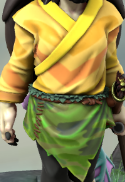
Linear patterns — Time
Spots — Stars
Splotches — Nature
—————————————————————————————————————————————————————————————————————
Religion
They have a polytheistic type of religion. Here are the type of deities that they worship:
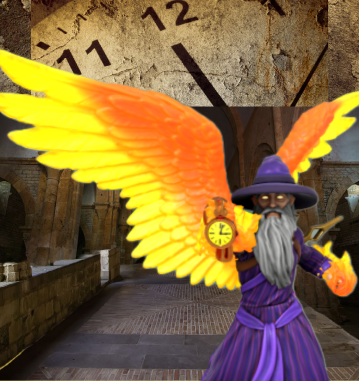
Temvoes
Temvoes is the time god and is often depicted with a face bearing the marks of time. He is usually shown with hourglasses and/or a clocks, symbolizing his control over the passage of time. In some depictions, he wears a cloak woven from the threads of time itself and his eyes seem to have the ability to see beyond the present moment. Sometimes he is also associate him with the cycle of birth, life, death, and rebirth, indicating his influence over the flow of time in both the mortal and divine realms because of this he is also depicted as a Phoenix.
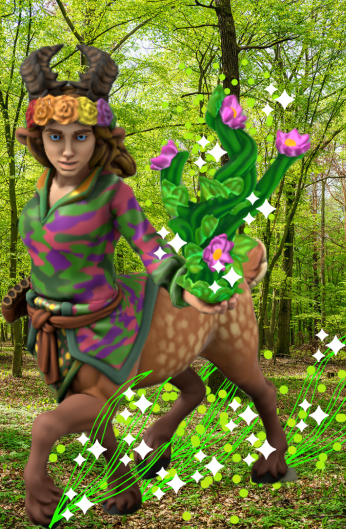
Vitira
Vitira, the goddess of nature, is often depicted as a young female centaur with horns and is adorned with leaves and flowers. She is shown dancing or playing a flute, symbolizing the harmony between nature and music. She is also often associated with prosperity and harvest, and the protector of life. Vitira was born from the first spark of creation during one of Temvoes’s long rests. It is said that she had created the Qui’volantian race.
Inanith’umbom
This deity of the abyss is shrouded in mystery, with few details are known and some speculate that it rules over the depths of the ocean, while others believe it holds sway over the dark underworld. Often depicted with long, serpentine tentacles and multiple eyes with one eye missing due to a battle with Temvus that lead to his exile to the “void below the sea” or Vahkisub’mahri. This deity inspires a mix of fear and reverence among its followers. Those who seek its favor must be willing to brave the ominous depths of the abyss and prove their worthiness through acts of courage and sacrifice.
Duncoe’theis
A deity depicted as large, bulbous, and frog-like with pulsating and twitching growths on his body that sometimes burst out with acidic puss and a human face on his body. He is the notorious and malevolent deity of greed, who revels in destruction and chaos. He is selfish and cruel, caring only for his own desires and pleasures. With his power, he delights in destroying everything in his path, leaving nothing but ashes and ruins. His worshippers are tricked with the promise of saving them from corruption, but they often end up as his slaves in the afterlife.
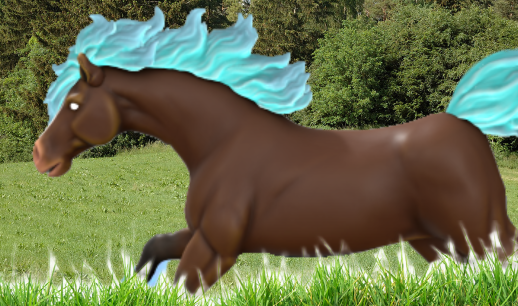
Myrf
Myrf is the revered horse god of the wind, known for his benevolent nature and protective spirit. Often depicted as a majestic stallion with a flowing mane. Meiph is believed to bless travellers with courage and strength, and offer safe passage on long journeys. Those who seek his guidance and blessings feel at peace and a cool breeze whenever they travel a long distance, even to unfamiliar places.
Klahza
A stone bear statue made and brought to life by Vituria and became the mythical bear god of thunder. Klahza is believed to be a protector of the wilderness and all its creatures. His worship was brought protection those whoever honored him from harm, where the bear god was seen as a source of divine protection and guidance. He roars with thunderous vitality, reminding the Quivolantians of the awe-inspiring power of nature.
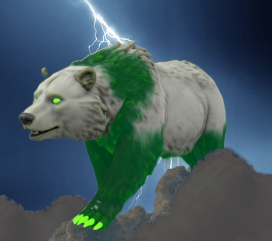
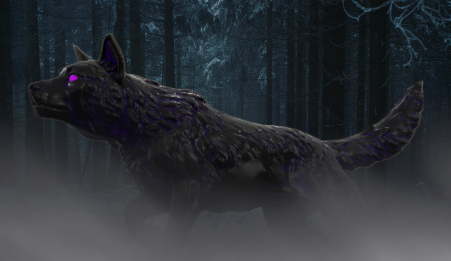
Fyrngreil
The wolf god of change and death. He is often depicted as a majestic, shadowy wolf with glowing eyes and leaving fog in his wake. He is believed to be responsible for guiding the souls of the departed into the afterlife, and for ushering in new eras of growth and transformation. While feared by some, Fyrngreil is also revered for his importance in the cycle of life and the evolution of the natural world. Qui'volantians will pray to him for foresight and guidance in a big change in their life.
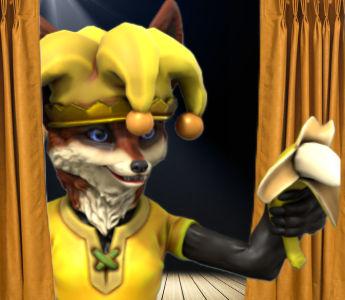
Lepik
Lepik the fox deity, known for her mastery of theatrics. She is said to have a mischievous spirit and a love for laughter, often delighting in playful pranks and clever jokes. Lepik is also associated with creativity and inspiration, many artists and performers seeking her blessings before taking the stage. In art, she is often depicted as an anthropomorphic fox with large, pointy ears and a gleeful expression, embodying the whimsical energy of her domain.
Nyrsmoes
Nysri is revered as the Qui'volantian god of medicine and healing. Believed to possess the power to cure any ailment or affliction, Nysri is often invoked by those in need of medical attention. His followers describe him as a wise and compassionate deity, who takes pity on the sick and infirm.
Crusahn
The god of creativity. This deity is responsible for inspiring artists, writers, musicians and all those who create. Crusynti is often depicted as a youthful figure adorned with vibrant colors and carrying various tools of creation such as a paintbrush, pen or musical instrument. Followers of Crusynti believe that by invoking his name and seeking his guidance, they can tap into their own creative potential and produce works of beauty and brilliance.
Kuhs'latirt
The lion god of hunting and war. He is revered by the Kuhs’tahtil for his guidance and protection during the hunt. Kuhs'latro is depicted as a muscular, majestic lion. Kuhs’tahtil often offer prayers and sacrifices to Kuhs'latro before setting out on a hunt, seeking his favor and blessings. Kuhs'latro is also associated with courage, strength, and perseverance, making him a popular deity among Kuhs’mahn’piro and adventurers as well.
The Afterlife
According to Qui'volantian mythology, the afterlife is depicted as a vast, open grassy field that stretches as far as the eye can see, under a clear blue sky. At the edge of that field is a dense forest. It's a serene and peaceful place, devoid of any earthly worries or troubles. This idyllic vision of the afterlife is highly revered in Qui'volantian culture, and is seen as a place of reunion with loved ones and eternal rest. This belief provides solace to those who have lost their loved ones, as they are comforted by the idea that their loved ones are now residing in this beautiful and peaceful place. This is a final resting place where souls stay. This realm is also visited by the deities. It is believed that life in the afterlife is eternal and that one's behavior during life determines their final resting place. This realm is called Prahtah'diphlorah.
Another realm is a bleak underworld for those who committed heinous crimes and followers of Duncoe’theis. It goes by the name of Indei'gentah. This underworld is a dark and treacherous place ruled by the infamous god of greed himself. It is said to be accessible through hidden tunnels and caves scattered throughout the town. The souls of the deceased must traverse through dangerous terrain and face terrifying creatures and malevolent spirits before reaching their final resting place. Those who incur the wrath of the Dunkotheis risk eternal damnation, forced to endure unspeakable horrors for all eternity.
Duk'iterah
The Duk'iterah holiday celebrates the hard work of harvest. It is said the Temvus, the time god sleeps during this time and thus is the reason why it becomes winter. It is forbidden to hunt or work during this holiday. Duk'iterah starts on December twenty-first through the end of Febuary.